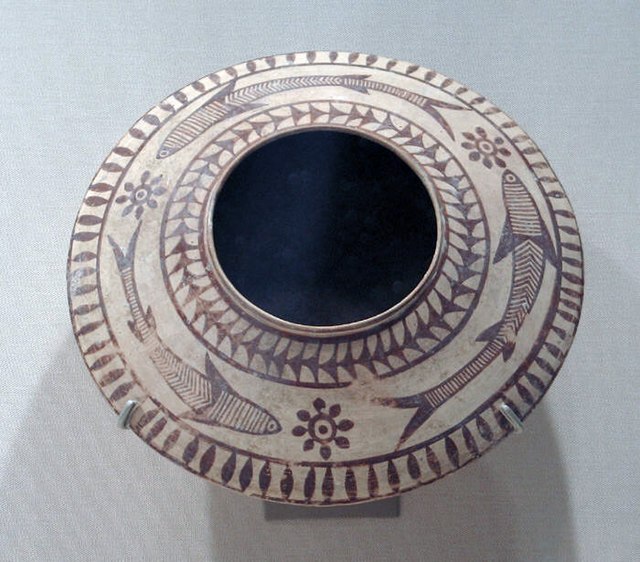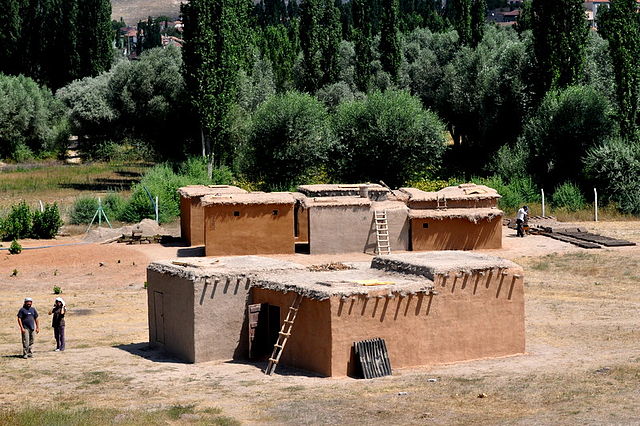Mehrgarh is a Neolithic archaeological site situated on the Kacchi Plain of Balochistan in modern-day Pakistan. It is located near the Bolan Pass, to the west of the Indus River and between the modern-day Pakistani cities of Quetta, Kalat and Sibi. The site was discovered in 1974 by the French Archaeological Mission led by the French archaeologists Jean-François Jarrige and his wife, Catherine Jarrige. Mehrgarh was excavated continuously between 1974 and 1986, and again from 1997 to 2000. Archaeological material has been found in six mounds, and about 32,000 artifacts have been collected from the site. The earliest settlement at Mehrgarh, located in the northeast corner of the 495-acre (2.00 km2) site, was a small farming village dated between 7000 BCE and 5500 BCE.
Ruins of houses at Mehrgarh, Balochistan
Seated Mother Goddess, 3000–2500 BCE. Mehrgarh.
Mehrgarh painted pottery, 3000–2500 BCE
The Neolithic or New Stone Age is an archaeological period, the final division of the Stone Age in Europe, Asia and Africa. It saw the Neolithic Revolution, a wide-ranging set of developments that appear to have arisen independently in several parts of the world. This "Neolithic package" included the introduction of farming, domestication of animals, and change from a hunter-gatherer lifestyle to one of settlement. The term 'Neolithic' was coined by Sir John Lubbock in 1865 as a refinement of the three-age system.
Reconstruction of Pre-Pottery Neolithic B housing in Aşıklı Höyük, modern Turkey
Reconstruction of a Neolithic farmstead, Irish National Heritage Park. The Neolithic saw the invention of agriculture.
An array of Neolithic artifacts, including bracelets, axe heads, chisels, and polishing tools.
The Urfa Man c. 9000 BC. Şanlıurfa Archaeology and Mosaic Museum.







